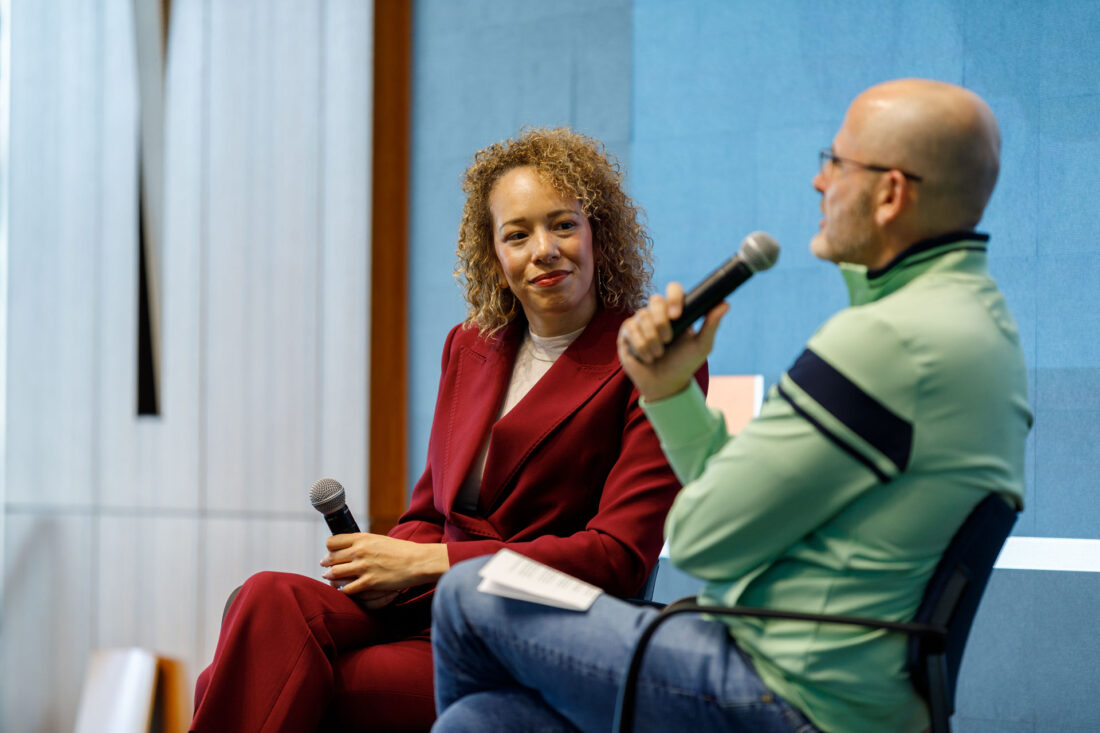Top HR and tech leaders join academics to tackle AI’s human impact at Culture Connect Conference
Most would agree with the old adage to learn from your mistakes—but how?
In their new book, The Other “F” Word: How Smart Leaders, Teams, and Entrepreneurs Put Failure to Work (Wiley, March 23, 2015), Berkeley-Haas lecturers John Danner and Mark Coopersmith, MBA 86, offer a seven-step framework for transforming failure into increased innovation, improved employee engagement, and accelerated company growth.
The book also includes interviews with some 60 high-level executives and entrepreneurs—from such organizations as Google, DuPont and UCSF Medical Center —who share their own experiences with failure.
 “Every organization or leader experiences failure. It is the biggest, most valuable yet untapped resource to success,” explains Danner.
“Every organization or leader experiences failure. It is the biggest, most valuable yet untapped resource to success,” explains Danner.
Danner and Coopersmith, both Berkeley-Haas senior fellows in the Lester Center for Entrepreneurship, teach a pioneering MBA course by the same name. They became interested in failure as an important book topic when talking to groups of MBA alumni during a lecture tour.
 “We noticed an interesting reaction when we talked about failure,” says Coopersmith. ”After our talks, people came to us and asked how they could start a conversation about this taboo topic in their organizations. That’s the goal of our book: to kickstart those conversations about the ‘other “F” word.’ It is not an academic textbook, but rather a pragmatic guide to exploring the frontier of failure and improving performance.”
“We noticed an interesting reaction when we talked about failure,” says Coopersmith. ”After our talks, people came to us and asked how they could start a conversation about this taboo topic in their organizations. That’s the goal of our book: to kickstart those conversations about the ‘other “F” word.’ It is not an academic textbook, but rather a pragmatic guide to exploring the frontier of failure and improving performance.”
The book, aimed at an organization’s leadership as well as its team members, offers practical advice structured around their seven-stage Failure Value Cycle:
- Respect and anticipate failure in order to reduce the fear of failure.
- Rehearse to improve your reflexes when failure happens.
- Recognize failure’s signals earlier to buy time.
- React quickly to minimize damage.
- Reflect to draw insights.
- Rebound to put new action plans into play to improve performance.
- Remember to strengthen workplace culture.
“Think of failure like gravity,” says Danner, “It’s a pervasive fact of life that you can’t ignore but can leverage to reach new heights.”
The book also features insights from well-known individuals. A former governor, an astronaut, a Broadway producer, Dilbert cartoonist and Berkeley-Haas alumnus Scott Adams, MBA 86, startup guru Guy Kawasaki, and many others recount how they turned mistakes into strategic opportunities.
Take, for example, Mark Hoplamazian, the president and CEO of Hyatt Hotels Corporation. Hoplamazian, the authors explain, improved the room turnaround time by 30 percent in one of the hotel’s London properties after recognizing that a siloed service approach was costly, inefficient, and, in effect, failing.
Hoplamazian discarded the linear approach of having multiple departments (maid service, engineering, catering, etc.) follow one another to accomplish a task and integrated the various tasks into a one-team model where each team member works on his or her responsibilities simultaneously.
“Fear of failure is one of the biggest challenges for leaders,” says Coopersmith. “Mr. Hoplamazian shares his approach to encouraging experimentation, taking risks, and accepting failure on the path to worldwide innovation. As he says, ‘Version 0.5 beats version 1.0.’”
The Other “F” Word also features a foreword by Time Warner Chairman and CEO Jeff Bewkes and an afterword by China Gorman, CEO of Great Place to Work.
Most would agree with the old adage to learn from your mistakes—but how? In their new book, The Other “F” Word: How Smart Leaders, Teams, and Entrepreneurs Put Failure to Work (Wiley, March 23, 2015), Berkeley-Haas lecturers John Danner and Mark Coopersmith, MBA 86, offer a seven-step framework for transforming failure into increased innovation, improved employee engagement, and accelerated company growth.
Posted in:



